AI-Driven Sentiment Analysis in Review Management


58% of consumers are willing to travel further and pay more if a company has good reviews. In addition to that, people generally want to do business or buy from companies that care about their customers.
One of the most important ways to show customers you care is by listening to what they have to say. That’s why many brands use AI-driven sentiment analysis in review management.
It works like this: Customers leave their feedback about your product or service. Then, you use an AI tool to analyze the sentiment behind their words.
As a result, you get quick, actionable insights into their favorite features or pain points.
If sentiment analysis is something you’re thinking about using for your product reviews, this guide covers just how to do it.
What Is Sentiment Analysis?
Sentiment analysis is a form of opinion mining that allows you to uncover the emotions and feelings behind text.
It analyzes how customers feel when they write a review or leave feedback in a survey.
- Was the feedback positive or negative?
- Or was it neutral?
- Was there sarcasm behind it?
- What about humor?
Sentiment analysis is so useful because you can quickly analyze hundreds—or even thousands–of social media posts, news articles, or customer reviews. This is something that would take countless hours to do manually.
So, customer sentiment analysis turns a tedious task into a more seamless, efficient process.
How Sentiment Analysis Works
So, how does sentiment analysis work? There are a few approaches to consider, such as rule-based, machine learning, and hybrid.
Rule-Based
Rule-based sentiment analysis uses specific rules that humans create. For example, if a customer uses the word “excellent” or “great” in a review, the tool will mark it as positive.
On the other hand, if the review includes words like “bad” or “terrible,” the tool will classify it as negative. If you use this approach, you only need to create a set of rules and a list of positive and negative words (also called a lexicon).
You also have lots of control because you know exactly how the system makes informed decisions since you set up the rules manually.
The problem with a rule-based approach is that it struggles with complex sentences, sarcasm, and context.
For example, consider this sentence: “This restaurant is so good…not!” The word “good” is positive, but the word “not” flips the review to negative. However, a rule-based sentiment analysis tool could easily misinterpret it.
Disclaimer: No matter which sentiment analysis tool or custom settings you use, there will probably still be mistakes. However, sentiment analysis is a great way to get an overview even from large masses of customer reviews and feedback.
Machine Learning
Machine learning (ML) learns from examples instead of following preset rules. You train the model on a large dataset of reviews that are either positive, negative, or neutral.
Over time, it “learns” patterns and predicts patterns in new reviews.
This machine learning model is better at understanding context and subtle nuances than rule-based approaches.
One of the biggest downsides of ML in sentiment analysis is the fact that you need a large dataset to learn accurately. This could take time to collect and label.
Hybrid
Hybrid sentiment analysis uses rules and ML.
You use rules to catch simple patterns or known words. Then, you use ML models to handle more complex human language.
This is a highly customizable method because you can create a system that works well for specific situations, like social media or customer reviews.
Setting up and fine-tuning rules and ML models requires more effort and expertise.
Don't have reviews yet? Try Trustmary!
The Role of AI in Sentiment Analysis
As we’ve noted above, traditional sentiment analysis may struggle to understand nuanced language, sarcasm, and context. This can lead to inaccurate data.
But when you add AI to the mix, you get more capabilities. Aside from ML, you also gain access to advanced natural language processing (NLP) and deep learning models (e.g., neural networks like BERT and GPT). These models can recognize complex language patterns, which makes them 85% more accurate in identifying sentiment than other methods.
This allows them to classify emotions on a more granular level beyond simple positive or negative categories. For example, they can recognize emotions like joy, anger, sadness, and excitement.
This comes quite in handy for analyzing customer reviews. Why? Because many customers may show a lot of emotion in their reviews, which can help you determine how much they love (or hate) your product.
Real-Life Example of Sentiment Analysis on Reviews
Look at this Amazon product review for olive oil by the Pompeian brand. The customer doesn’t leave an ordinary review. They could have said, “Great olive oil. I will buy again.”
But they take it to the next level with phrases like “Best cooking oil I didn’t realize I needed” and “How can I give this 10 stars?!!!”
A traditional sentiment analysis tool would probably be able to classify the review as positive. But it would probably struggle to capture the customer’s excitement.
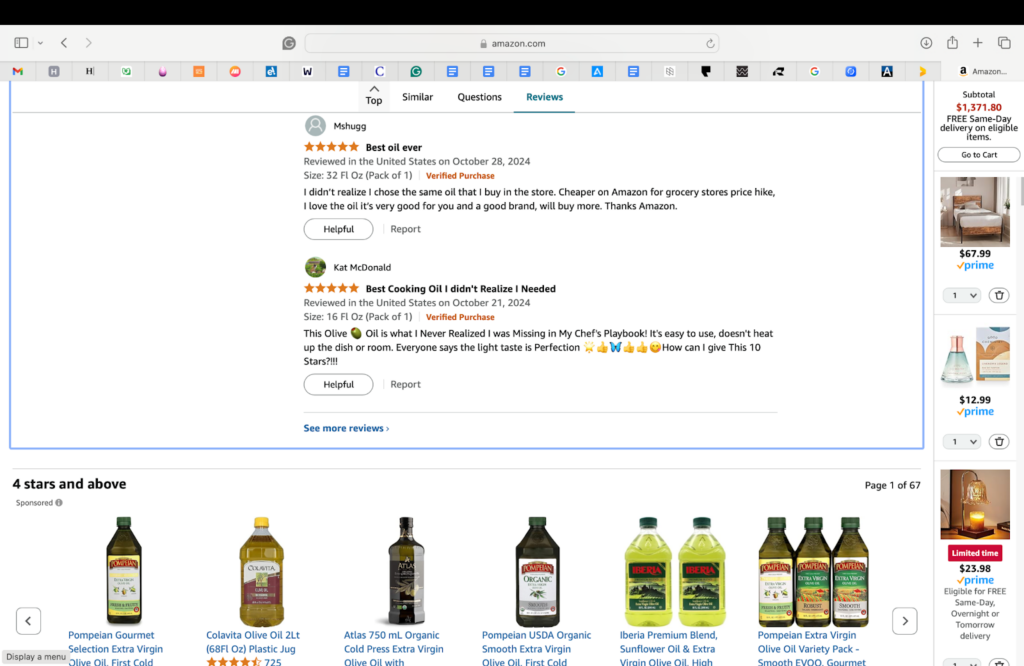
Benefits of AI-Driven Sentiment Analysis
AI-driven sentiment analysis is one of those powerful tools every business owner should have in their marketing strategies.
Let’s see why:
- Improve customer service: AI-driven sentiment analysis helps you understand how customers feel about a product or service in real time. So you can quickly identify and respond to complaints or issues.
- Enhance decision-making: You get valuable insights into customer and public opinions and trends. As a result, you can make informed, data-driven decisions based on what customers actually want or need.
- Personalize marketing and engagement: Sentiment analysis helps identify customers’ emotions and preferences. That way, you can tailor messages and offers that feel more personal and relevant.
- Monitor brand reputation: With AI, you can track people's opinions about your brand online. You can spot both positive and negative mentions to manage and protect your reputation.
- Track social media trends: AI can analyze social media trends, helping you stay updated on popular topics or shifts in customer sentiment.
- Quickly respond to crises: When negative sentiment strikes, you can get immediate alerts. This allows you to address the issue quickly and minimize potential damage.
- Get product development insights: AI analyzes customer feedback, which helps you uncover specific likes, dislikes, and feature requests. This valuable data can help you improve your products or create new ones.
Using AI-Driven Sentiment Analysis for Review Management
When it comes to brand reputation management, you’ve probably heard the advice to monitor your reviews countless times.
Well, what if you get hundreds of Google reviews per day?
It would be difficult to get a full understanding of what customers think because you'd have to read every review manually.
AI-driven sentiment analysis eliminates that need. Just by having a Google review report can send you hours of time, and improve customer understanding.
It reads reviews, digs deeper, and spots trends, like the frequency of complaints about a specific feature.
So, you get a quick snapshot of what really matters to customers without the usual sorting and skimming.
Looking to get more reviews? Try Trustmary!
Concrete Examples of AI-Driven Sentiment Analysis for Reviews
Want to see AI-driven sentiment analysis in review management in action? Check out these examples.
Amazon
Amazon's online shopping platform contains millions of reviews. It uses AI to analyze customer feedback and spot trends in customer satisfaction.
By understanding sentiment patterns, Amazon can make better product recommendations, adjust product listings, and alert sellers to quality issues based on common complaints.
Here’s an example of how Amazon uses sentiment analysis to summarize what customers are saying about a perfume by Good Chemistry.
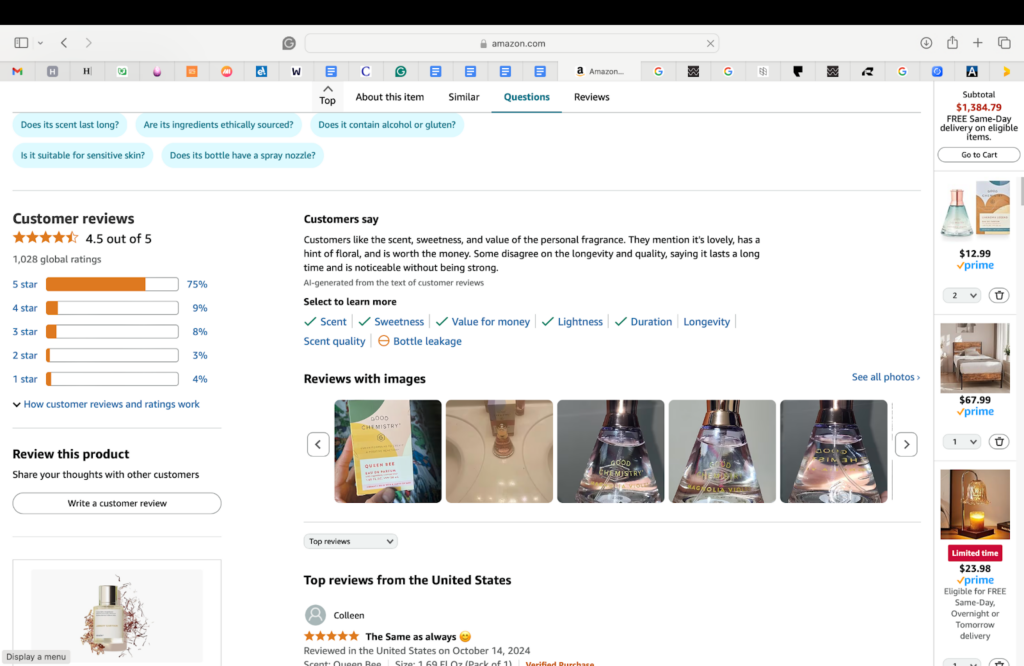
You can even categorize reviews by clicking on certain keywords.
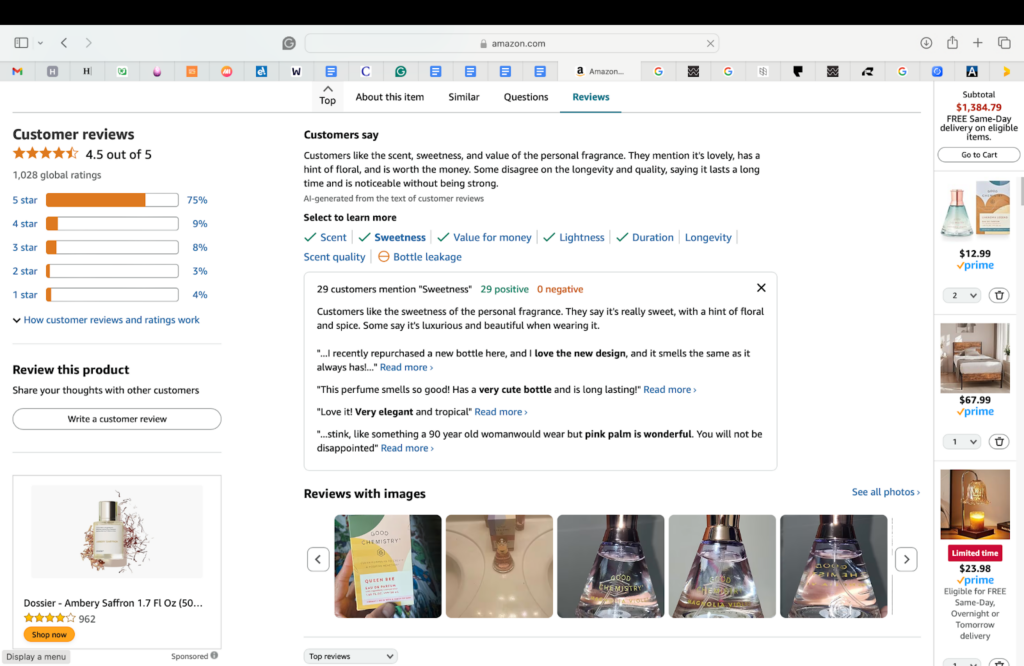
TripAdvisor
With sentiment analysis, TripAdvisor analyzes reviews for hotels, restaurants, and attractions to understand what travelers are looking for. AI categorizes feedback, like whether a hotel is clean, has nice amenities, or is affordable.
In the image below, you can see a review summary for The Candler Hotel Atlanta. Travelers can easily find out—in a nutshell—what the hotel has to offer without having to read a single review.
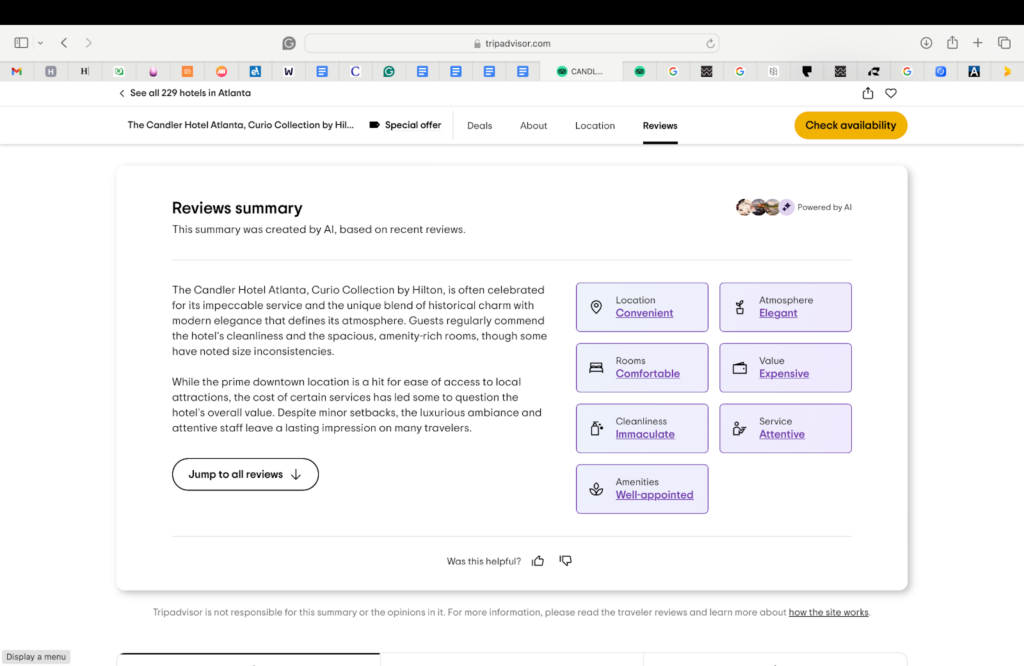
Tesla
Tesla uses AI-driven sentiment analysis to review customer feedback from social media, online forums, and review sites.
That way, Tesla can identify common issues (like user interface frustrations or battery concerns) and address them proactively.
This bar chart shows the total sentiment from Elon Musk’s tweets on X. As you can see, most of it is positive. Trust and anticipation are other key emotions Musk’s audience expresses on the platform.
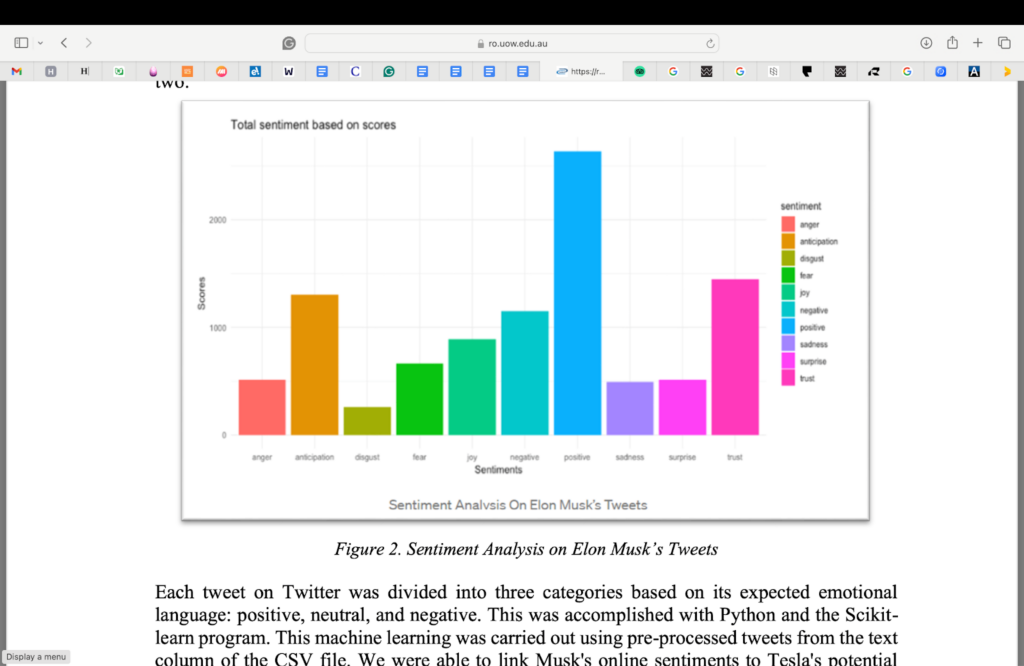
How to Use AI-Driven Sentiment Analysis in Review Management
Now, let’s get into the real reason you’re here. We’ll cover the important steps to implementing AI-driven sentiment analysis in your review management process.
1. Set Clear Goals for Your Sentiment Analysis
Decide what you want to measure. Do you want to understand customer sentiment about specific products, service quality, or both? Outline these objectives first so that you can configure your AI tool to capture and analyze the right types of feedback.
Identify categories and keywords for your industry or brand, such as “delivery time,” “quality,” or “customer support.” This will help your tool focus on the most relevant aspects of your reviews.
2. Choose and Integrate an AI Sentiment Analysis Tool
Choose an AI tool that specializes in sentiment analysis. Many review management platforms now have built-in AI for this. You can also integrate dedicated sentiment analysis software.
These tools will sift through reviews, social media mentions, and feedback forms to give you insights into what people love (or don’t love) about your product or service.
You can even connect the tool to your review sources, such as Google Reviews, TrustPilot, or your website.
3. Organize Data Using a Customer Data Platform
Link your sentiment analysis tool with a CDP.
Customer data platforms (CDPs) are game-changers when it comes to sentiment analysis in review management.
They gather and organize customer data from different channels, giving AI a more complete picture.
This extra context helps the AI understand reviews better. As a result, you can identify patterns, like which customer segments are more likely to leave positive or negative feedback.
With these valuable insights, you can take smarter actions, like tailoring responses or improving services based on what specific groups of customers care about most.
All Trustmary users can use our built-in solution for analyzing sentiment in reviews. No need to export reviews to (yet another) tool.
4. Set Up Alerts for High-Priority Feedback
Configure alerts within the tool for specific keywords or scores.
For example, if the sentiment score is low or if keywords like “refund” or “cancel” appear, have the tool alert your team immediately.
The faster you respond to these high-priority issues, the faster you can turn around negative customer experiences before they escalate.
5. Respond to Feedback With Personalization
Use AI-generated insights to personalize your responses to customer reviews. If you detect a customer feeling frustrated with service speed, acknowledge this directly.
Then, provide a tailored solution, like expediting a refund or offering a discount. To see if your response was effective, see if sentiment improves in follow-up reviews.
6. Use Insights to Improve Your Products
Create monthly or quarterly reports that summarize trends. Look for frequently mentioned iss
Ues or areas of praise. These show where your product or service is doing well or may need updates.
Set up team meetings to discuss these findings and prioritize changes. And share positive insights with your marketing team to inform future campaigns.
7. Ensure Data Privacy and Security Compliance
Verify that your AI sentiment analysis solution has data security measures that meet regulations like GDPR or CCPA.
AI data security is essential for sentiment analysis in review management. It helps protect sensitive data from breaches and unauthorized access, ensuring the system's reliability.
This safeguards customer trust and keeps your business compliant with data protection laws. Strong security measures ensure that your AI tools work ethically and responsibly, maintaining the accuracy of your insights.
Put Customer Insights into Action
Improve the customer experience and drive loyalty by acting on feedback. AI-powered sentiment analysis makes this easier.
Think of customer reviews as pieces of data. You can use a sentiment analysis tool to extract that data and make it actionable. Don't forget to include customer review analysis!
Trustmary is an example of a tool that uses AI to identify how positive or negative a review is. With Trustmary’s AI, you can determine which reviews to publish on your website—with just one glance.
Click the link below to get started collecting reviews for free with Trustmary!
FAQ
How to do sentiment analysis on reviews?
Use an AI-powered sentiment analysis tool to automatically analyze customer reviews and categorize them as positive, neutral, or negative.
What is the sentiment analysis process for reviews?
The process involves gathering reviews, feeding them into an AI tool, and generating insights on customer sentiment trends.
What is sentiment analysis for brand reputation management?
Sentiment analysis helps brands monitor public perception, identify potential risks early, and respond proactively to maintain their reputation.